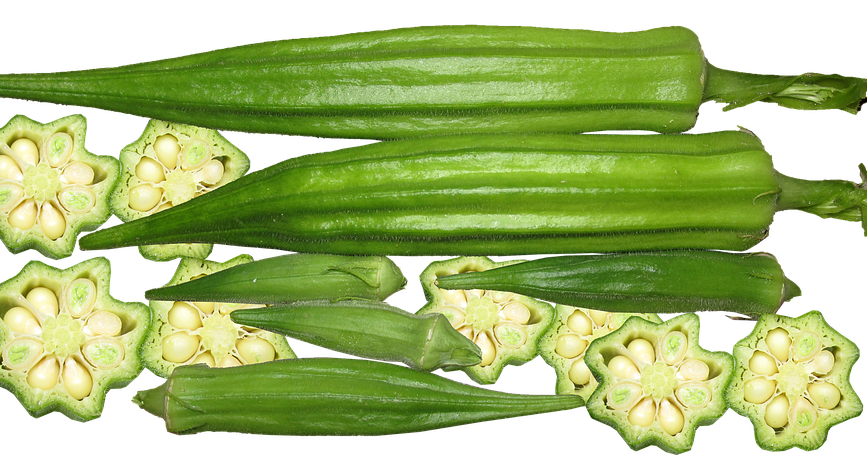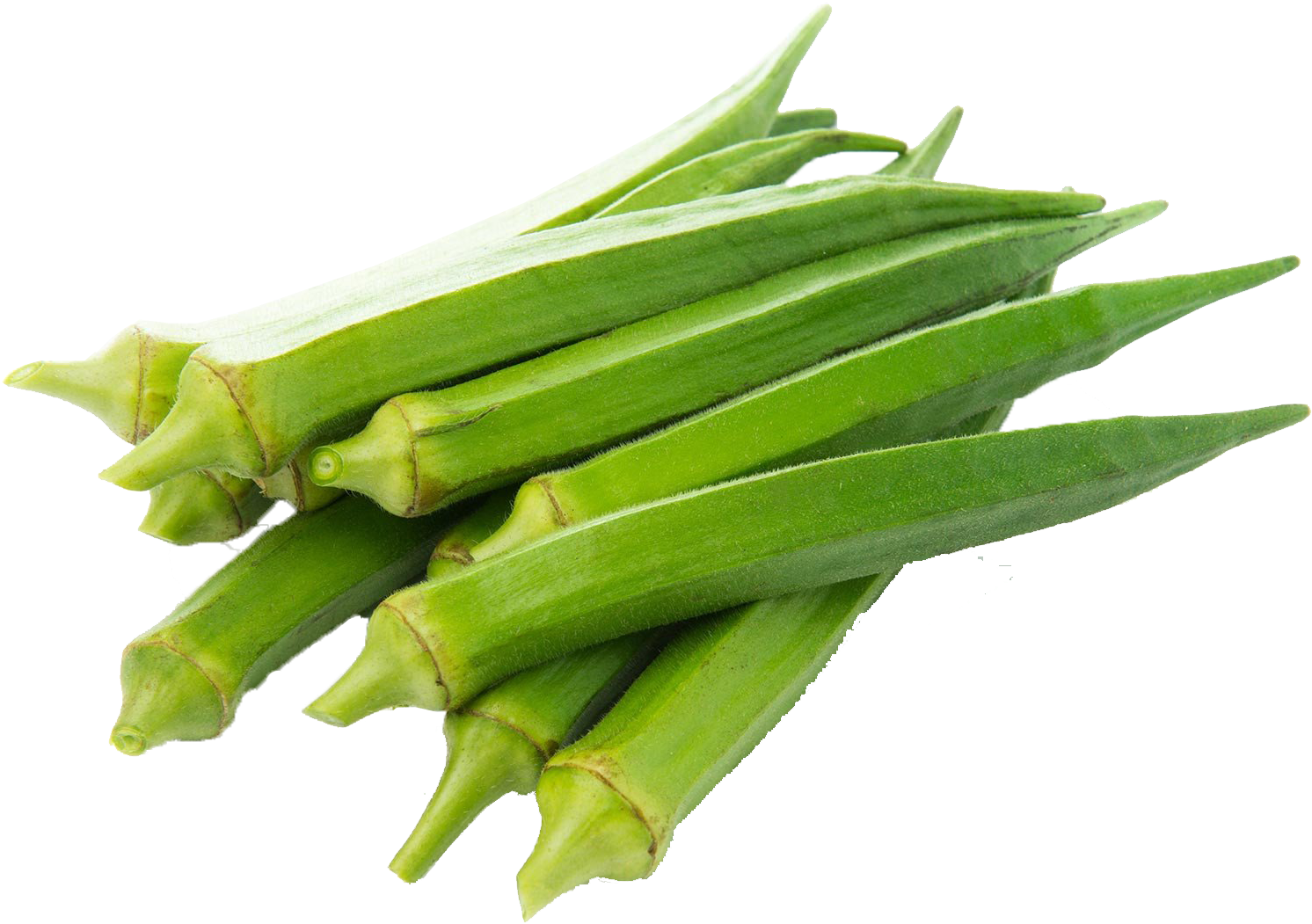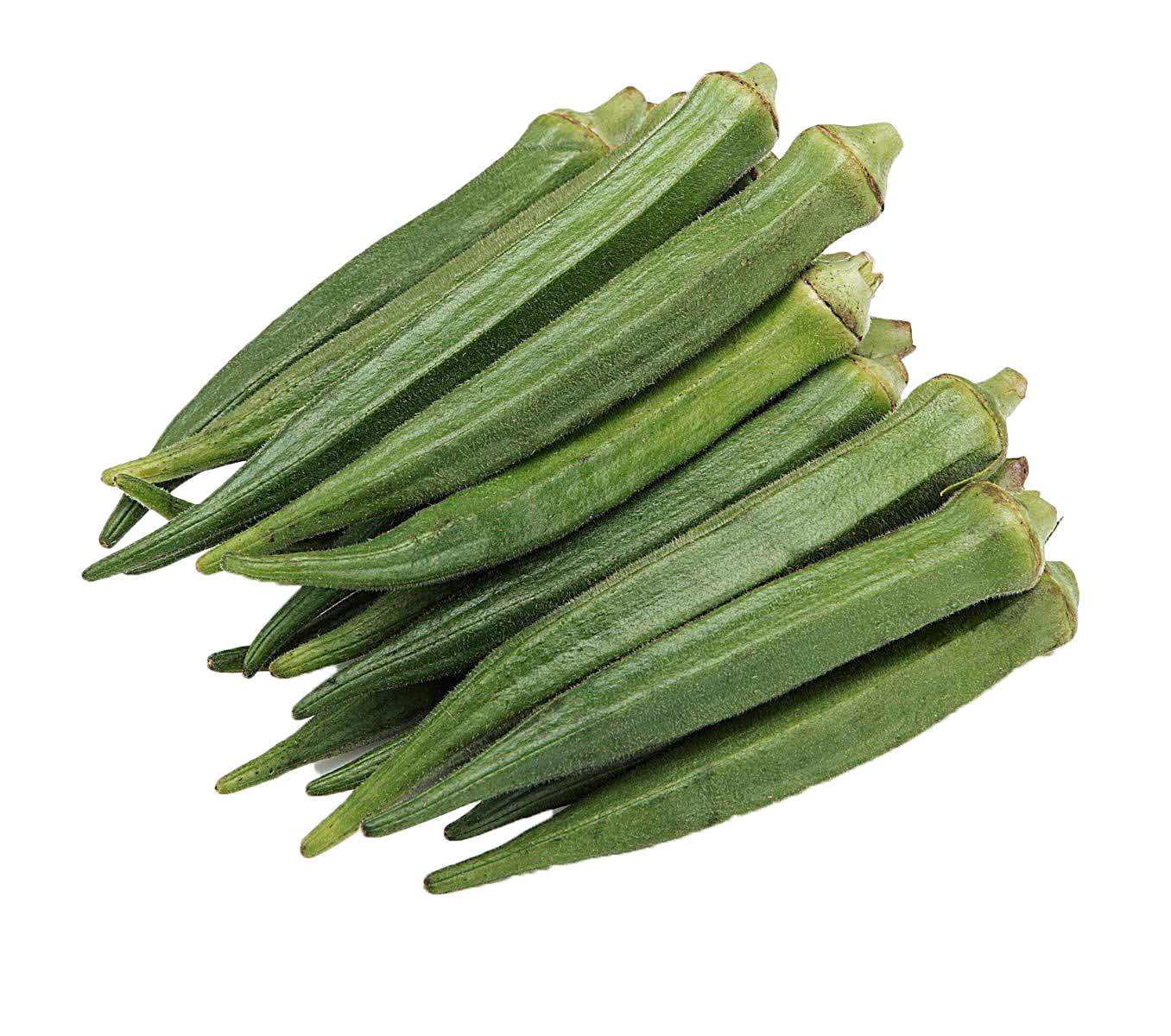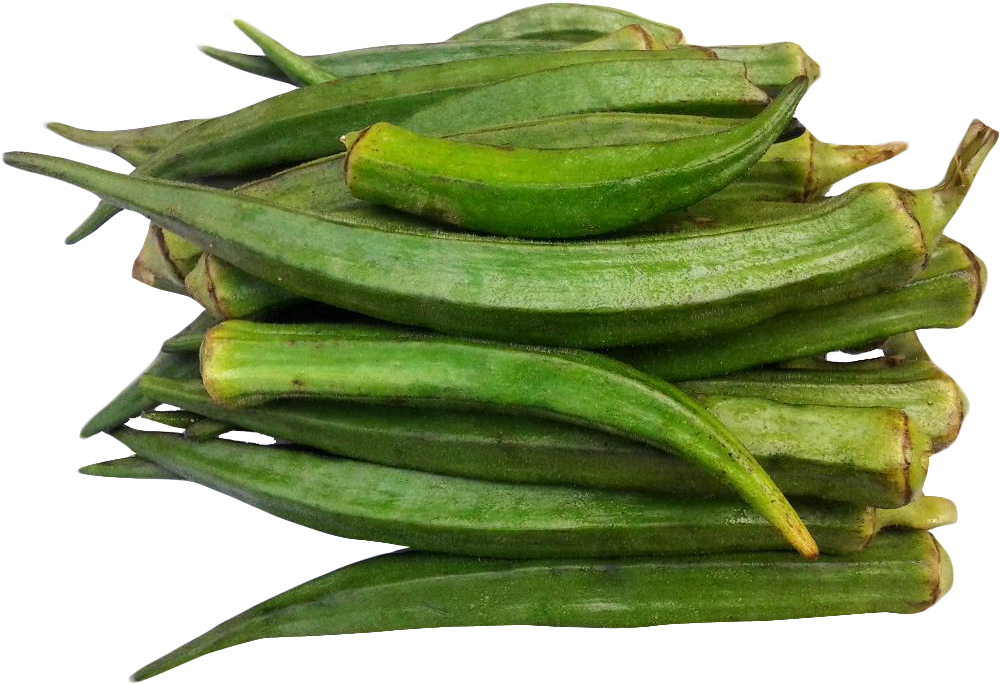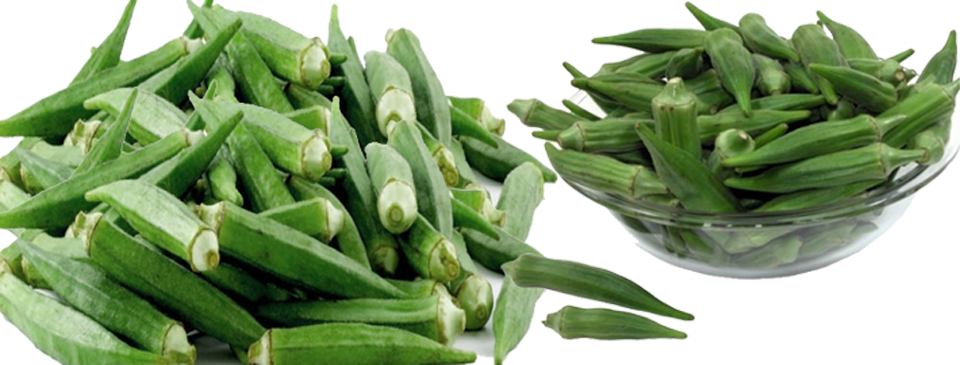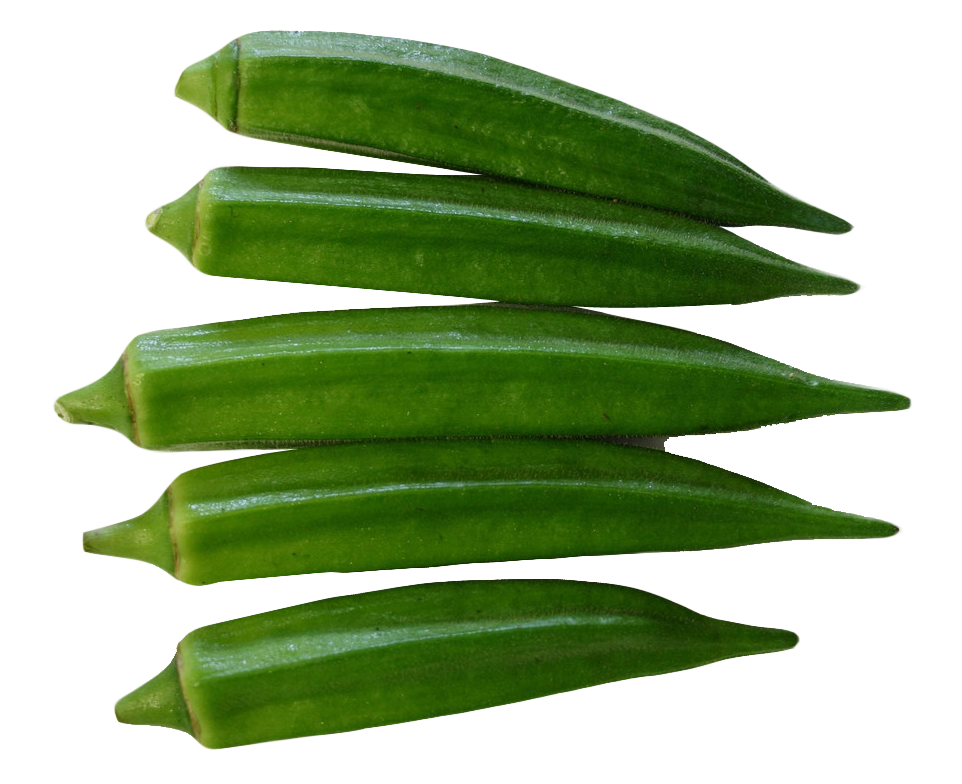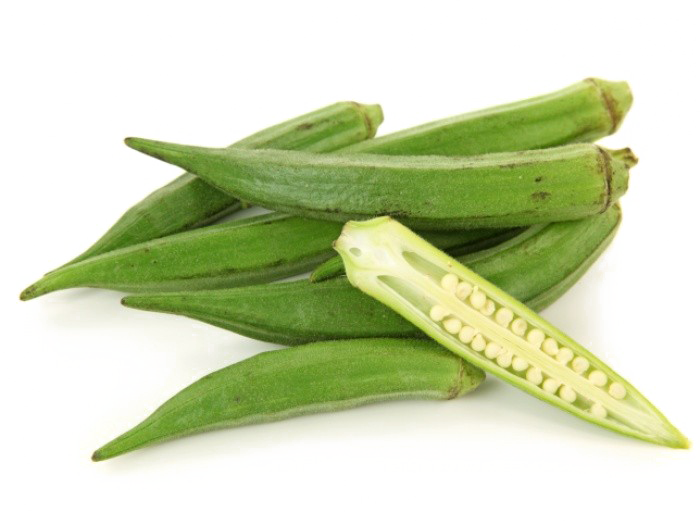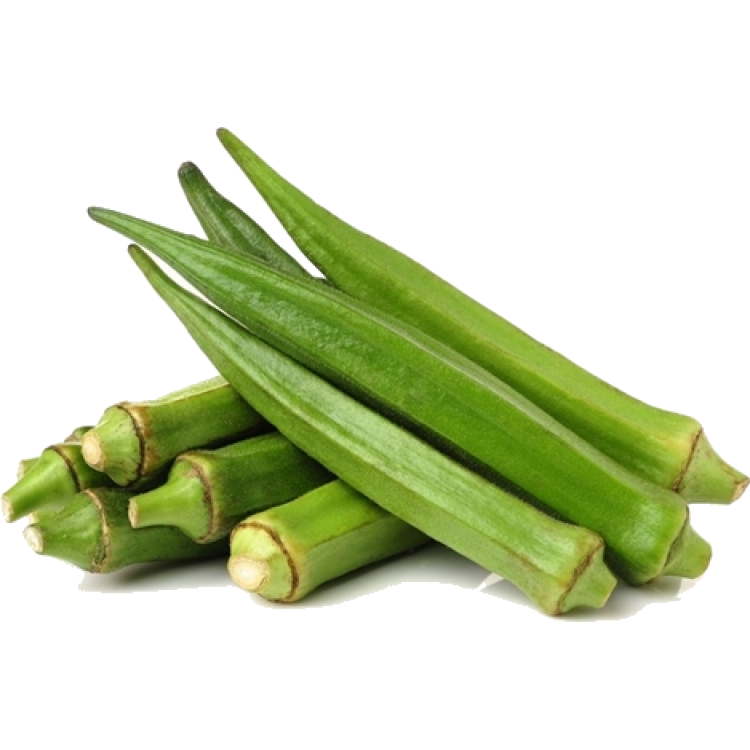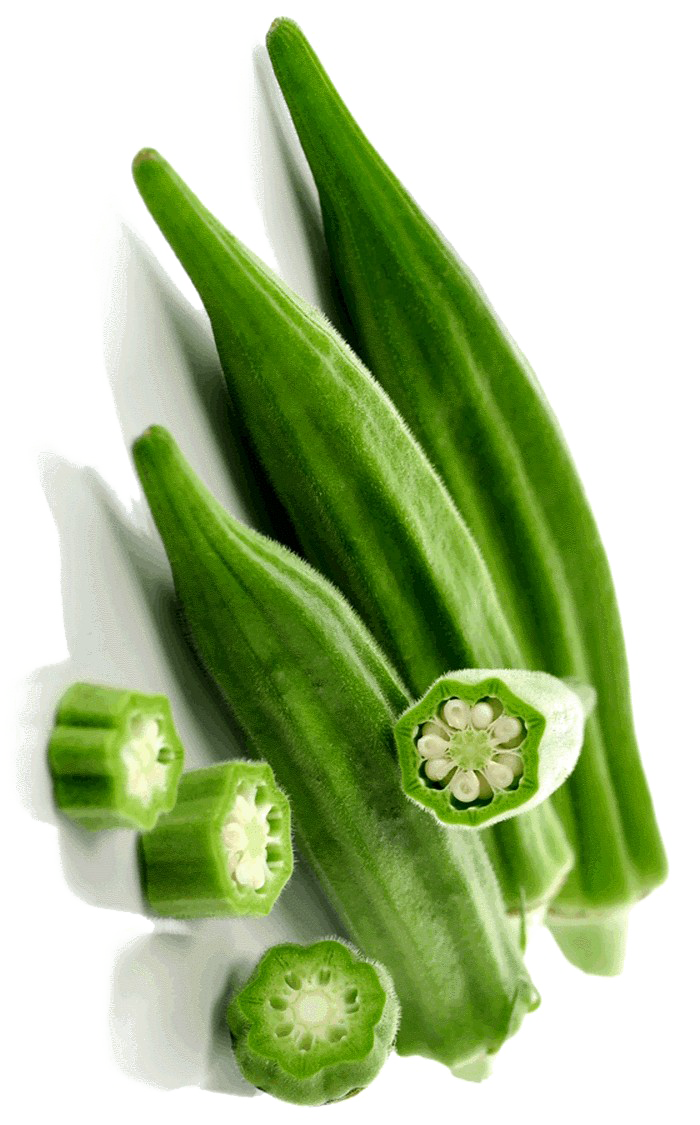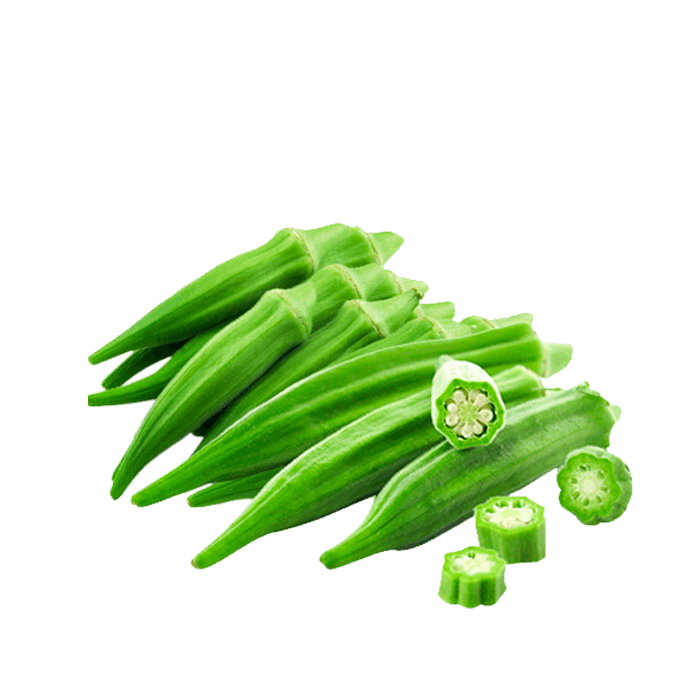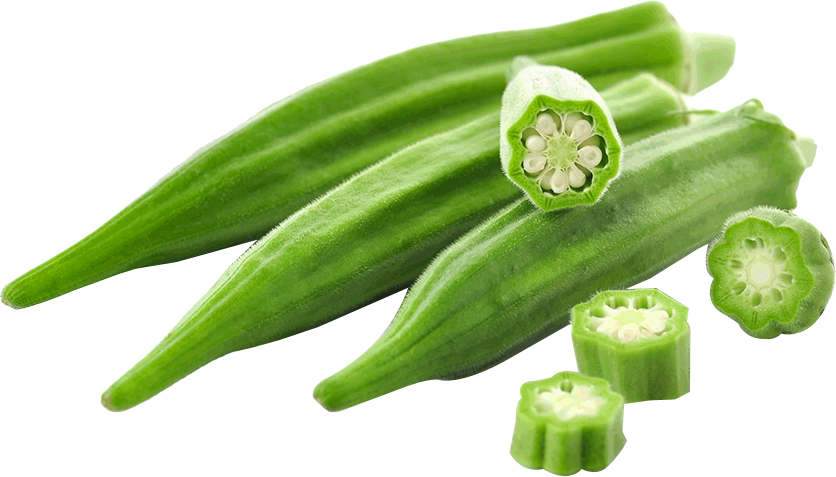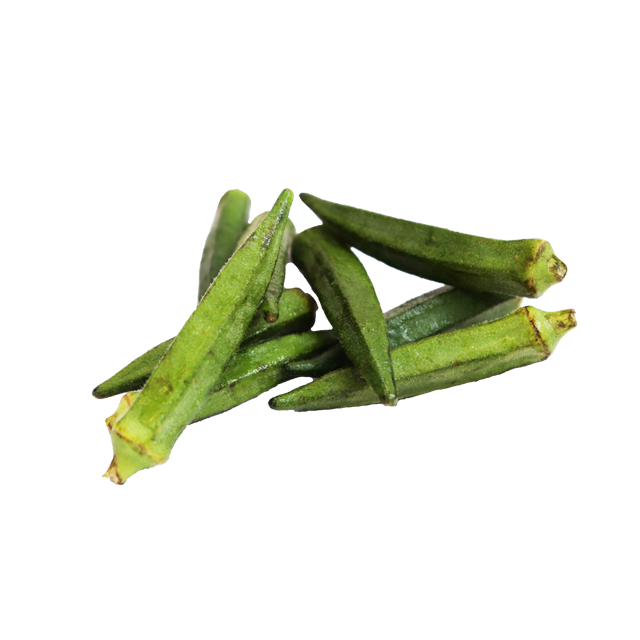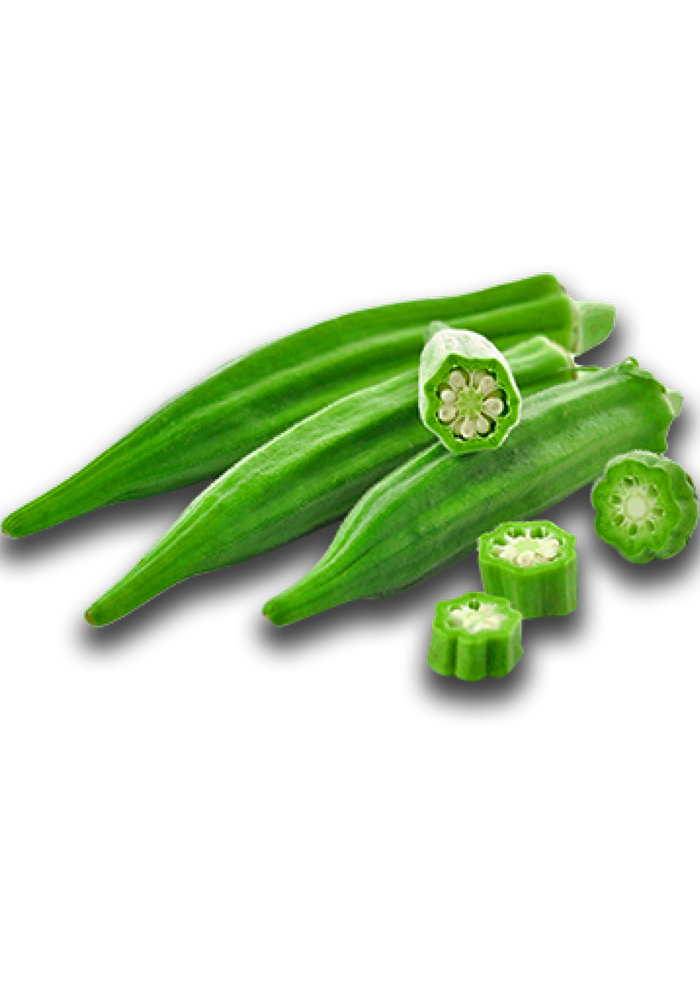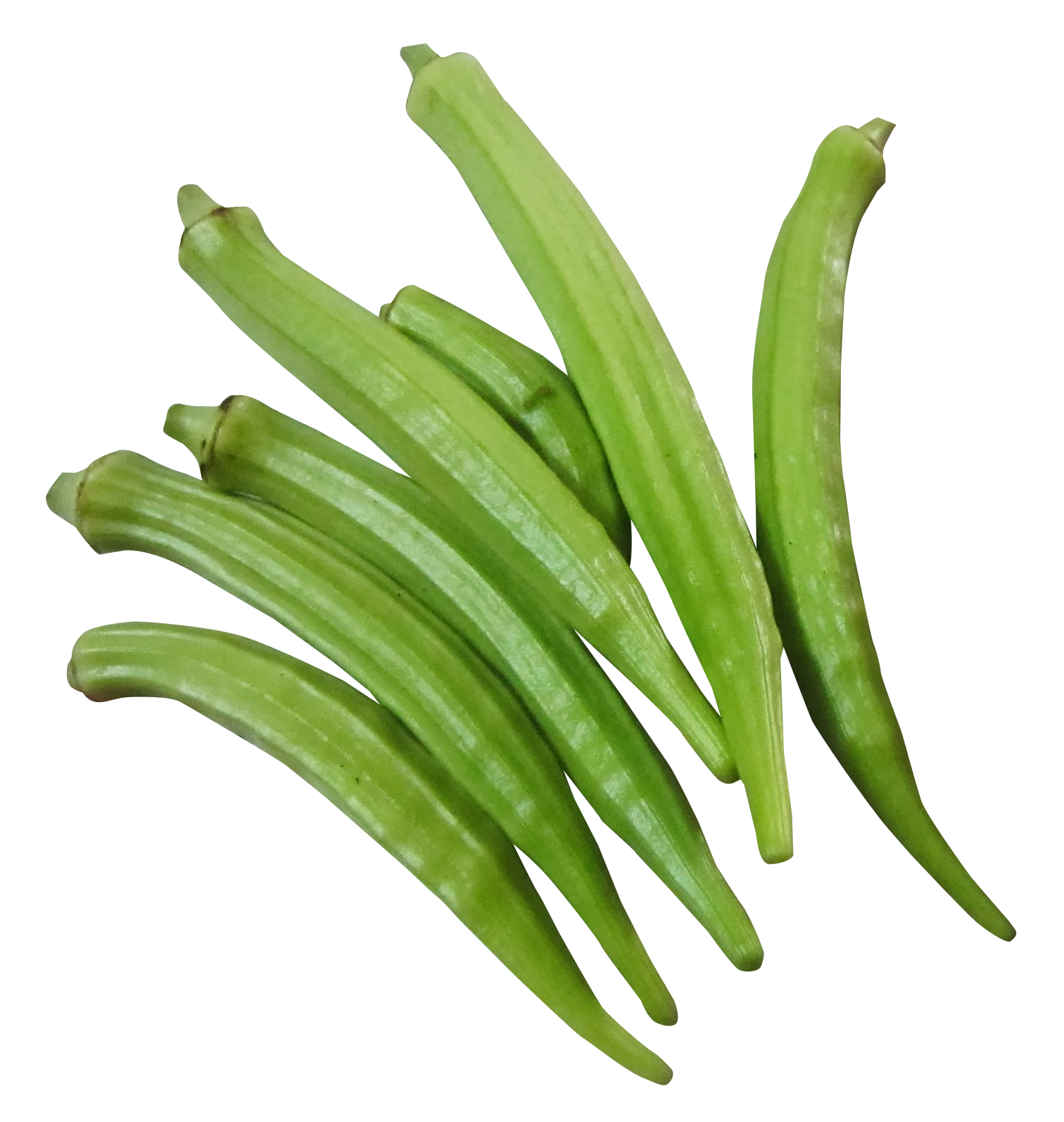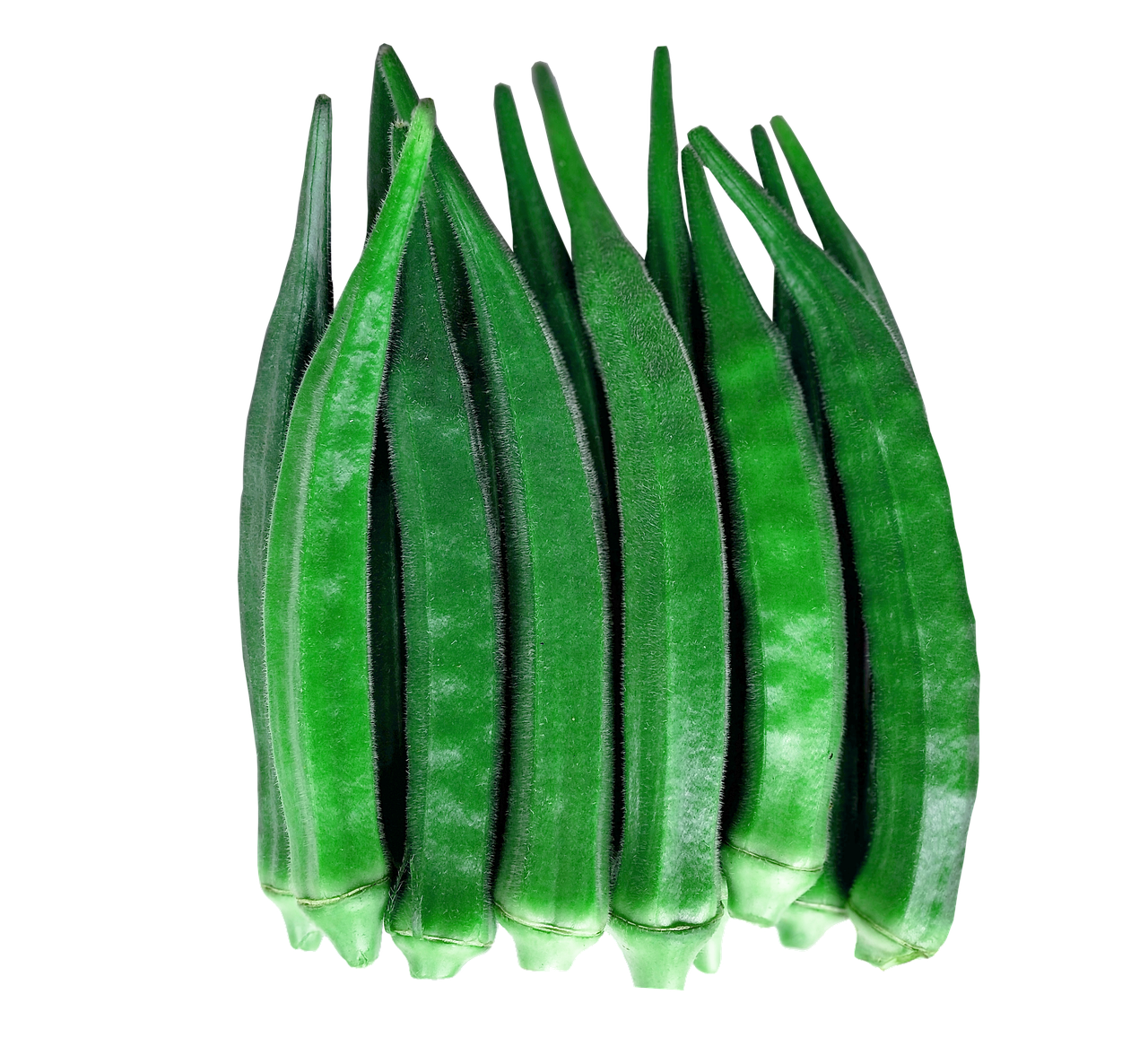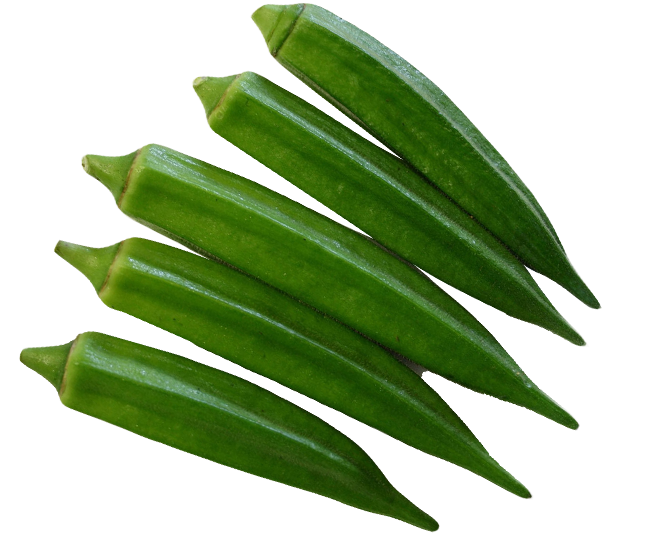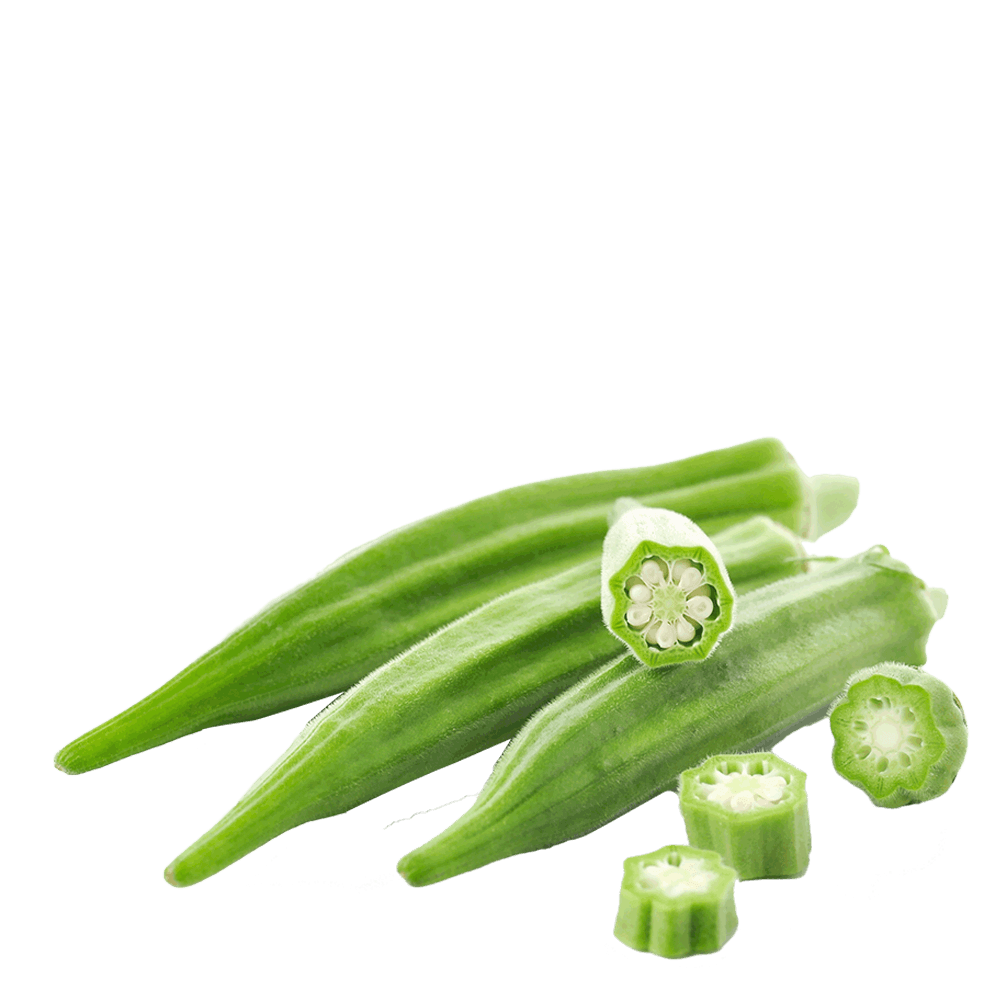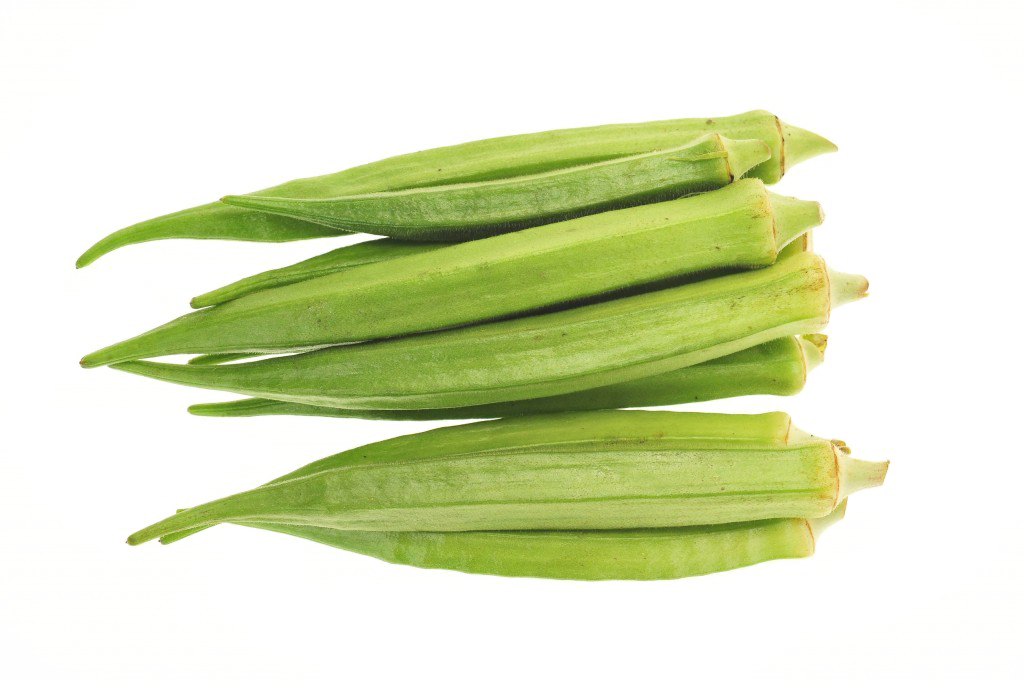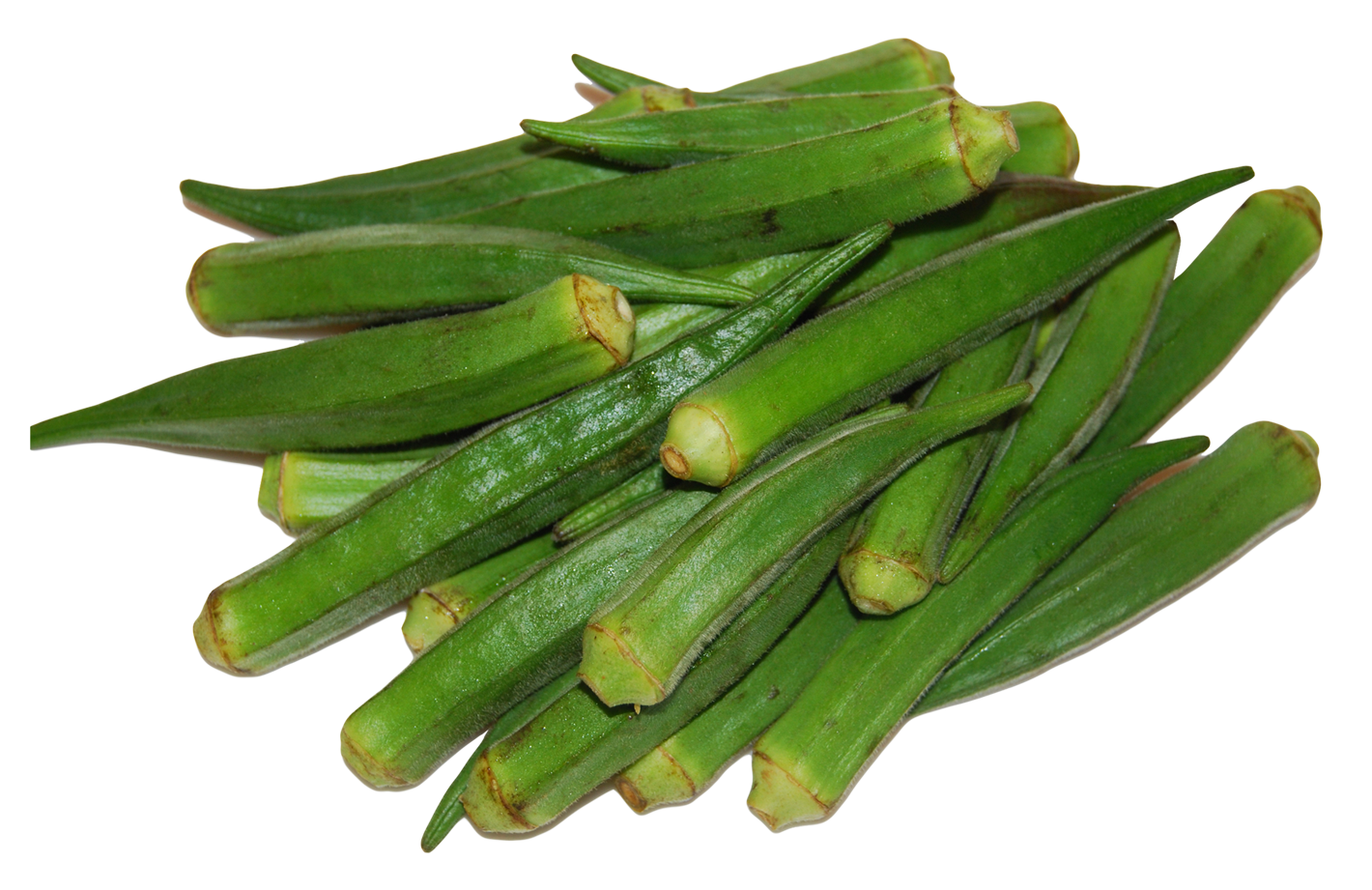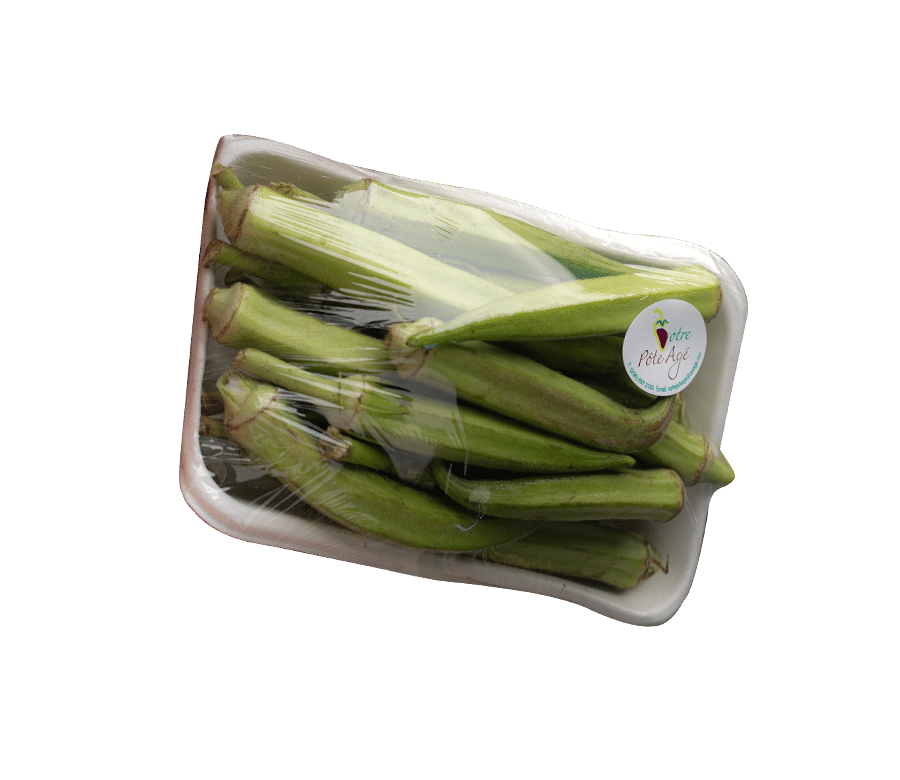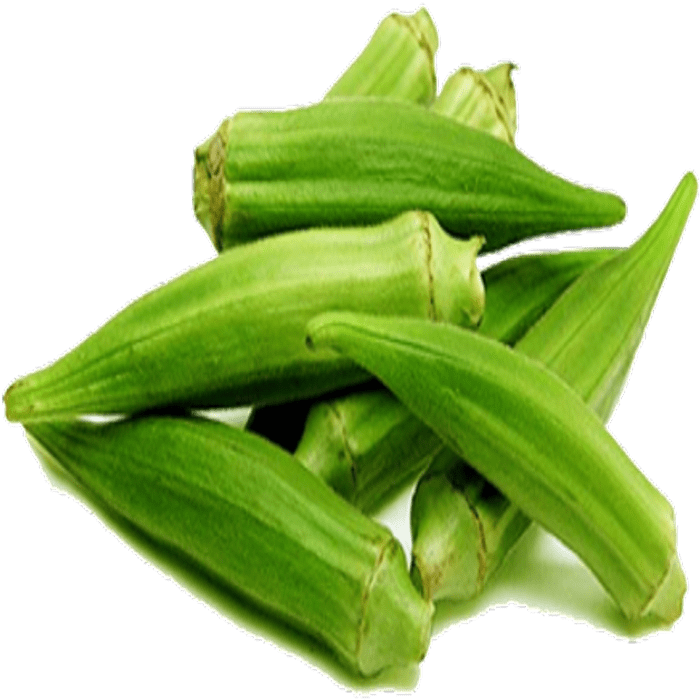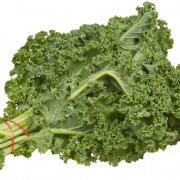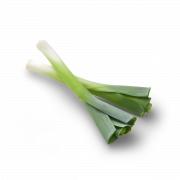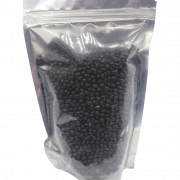Download top and best high-quality free Lady Finger (Okra) PNG Transparent Images backgrounds available in various sizes. To view the full PNG size resolution click on any of the below image thumbnail.
License Info: Creative Commons 4.0 BY-NC
Okra, or Okro Abelmoschus esculentus, is a blooming plant in the mallow family known as ladies fingers or ochro in many English-speaking nations. Its delicious green seed pods are prized. Minerals, vitamins, antioxidants, and fiber are all abundant in it. Okra’s origins are debated, with proponents claiming West African, Ethiopian, and South Asian roots. The plant is grown in tropical, subtropical, and warm temperate climates throughout the world, and it’s a popular ingredient in Southern American and Indian cuisines.
‘Abelmoschus’ is a New Latin word derived from Arabic (ab l-misk, “father of musk”). ‘esculentus’ means ‘suitable for human consumption’ in Latin.
The word okra (sometimes spelled okro or ochro) was originally used in 1679 in the Colony of Virginia, and it was derived from the Igbo word kr. Gumbo is derived from either the Umbundu term ochinggômbo or the Kimbundu word ki-combo and was first documented in American vernacular about 1805, stemming from Louisiana Creole.
The vegetable is known as quimbombó in Cuba and Puerto Rico, and it’s used in recipes like quimbombó guisado (stewed okra), which is comparable to Southern gumbo. Even though the name gumbo is often used to refer to the dish gumbo in much of the United States, many communities in the Deep South still use it to refer to the pods and plant, as well as many other variations of the word found across the African diaspora in the Americas.
Okra is an allopolyploid with unknown parental origins. Abelmoschus ficulneus, Abelmoschus tuberculatus, and a purported “diploid” variety of okra have been suggested as possible parents. The existence of really wild (as opposed to naturalized) populations is unknown, and the species may be cultigen.
Okra’s origins are debated, with proponents claiming South Asian, Ethiopian, and West African roots. The Arabic term for the plant, bamya, was used by Egyptians and Moors in the 12th and 13th centuries, implying that it had come into Egypt from Arabia. However, it was most likely transported from Ethiopia to Arabia earlier.
It’s possible that the plant crossed the Red Sea or the Bab-el-Mandeb straight to the Arabian Peninsula, rather than crossing the Sahara or coming from India. One of the oldest reports is a Spanish Moor who visited Egypt in 1216 and described the plant under cultivation by the people who ate the sensitive, young pods with a meal. The plant migrated eastward from Arabia along the Mediterranean Sea’s coasts. By 1658, when it was discovered in Brazil, the plant had been brought to the Americas by ships operating the Atlantic slave trade.
In 1686, it was also reported in Suriname. Okra is said to have arrived in southern North America from Africa in the early 1800s. It was cultivated as far north as Philadelphia by 1748. It was widely established in Virginia by 1781, according to Thomas Jefferson. By 1800, it had become famous throughout the Southern United States, with the first mention of distinct cultivars occurring in 1806.
Download Lady Finger (Okra) PNG images transparent gallery.
- Okra PNG Cutout
Resolution: 867 × 455
Size: 718 KB
Image Format: .png
Download
- Lady Finger Okra
Resolution: 1492 × 1051
Size: 1843 KB
Image Format: .png
Download
- Lady Finger Okra PNG Images
Resolution: 1356 × 1200
Size: 1751 KB
Image Format: .png
Download
- Lady Finger Okra PNG Photos
Resolution: 1000 × 684
Size: 1163 KB
Image Format: .png
Download
- Lady Finger Okra Transparent
Resolution: 960 × 365
Size: 552 KB
Image Format: .png
Download
- Lady Finger Okra PNG Clipart
Resolution: 962 × 784
Size: 619 KB
Image Format: .png
Download
- Lady Finger Okra PNG Picture
Resolution: 700 × 525
Size: 304 KB
Image Format: .png
Download
- Lady Finger Okra PNG HD Image
Resolution: 750 × 750
Size: 348 KB
Image Format: .png
Download
- Okra PNG
Resolution: 700 × 1125
Size: 897 KB
Image Format: .png
Download
- Okra
Resolution: 700 × 700
Size: 78 KB
Image Format: .png
Download
- Lady Finger Okra PNG Image HD
Resolution: 2674 × 787
Size: 1505 KB
Image Format: .png
Download
- Okra PNG Pic
Resolution: 836 × 477
Size: 478 KB
Image Format: .png
Download
- Okra PNG File
Resolution: 640 × 640
Size: 251 KB
Image Format: .png
Download
- Lady Finger Okra No Background
Resolution: 700 × 1000
Size: 372 KB
Image Format: .png
Download
- Lady Finger Okra PNG
Resolution: 1512 × 1595
Size: 1053 KB
Image Format: .png
Download
- Lady Finger Okra PNG Pic
Resolution: 1280 × 1176
Size: 1650 KB
Image Format: .png
Download
- Lady Finger Okra PNG File
Resolution: 670 × 535
Size: 422 KB
Image Format: .png
Download
- Okra PNG Image
Resolution: 1000 × 1000
Size: 138 KB
Image Format: .png
Download
- Okra PNG Photo
Resolution: 1024 × 681
Size: 468 KB
Image Format: .png
Download
- Lady Finger Okra PNG Image
Resolution: 1420 × 921
Size: 1423 KB
Image Format: .png
Download
- Lady Finger Okra PNG Photo
Resolution: 900 × 780
Size: 126 KB
Image Format: .png
Download
- Lady Finger Okra PNG Cutout
Resolution: 700 × 700
Size: 151 KB
Image Format: .png
Download
